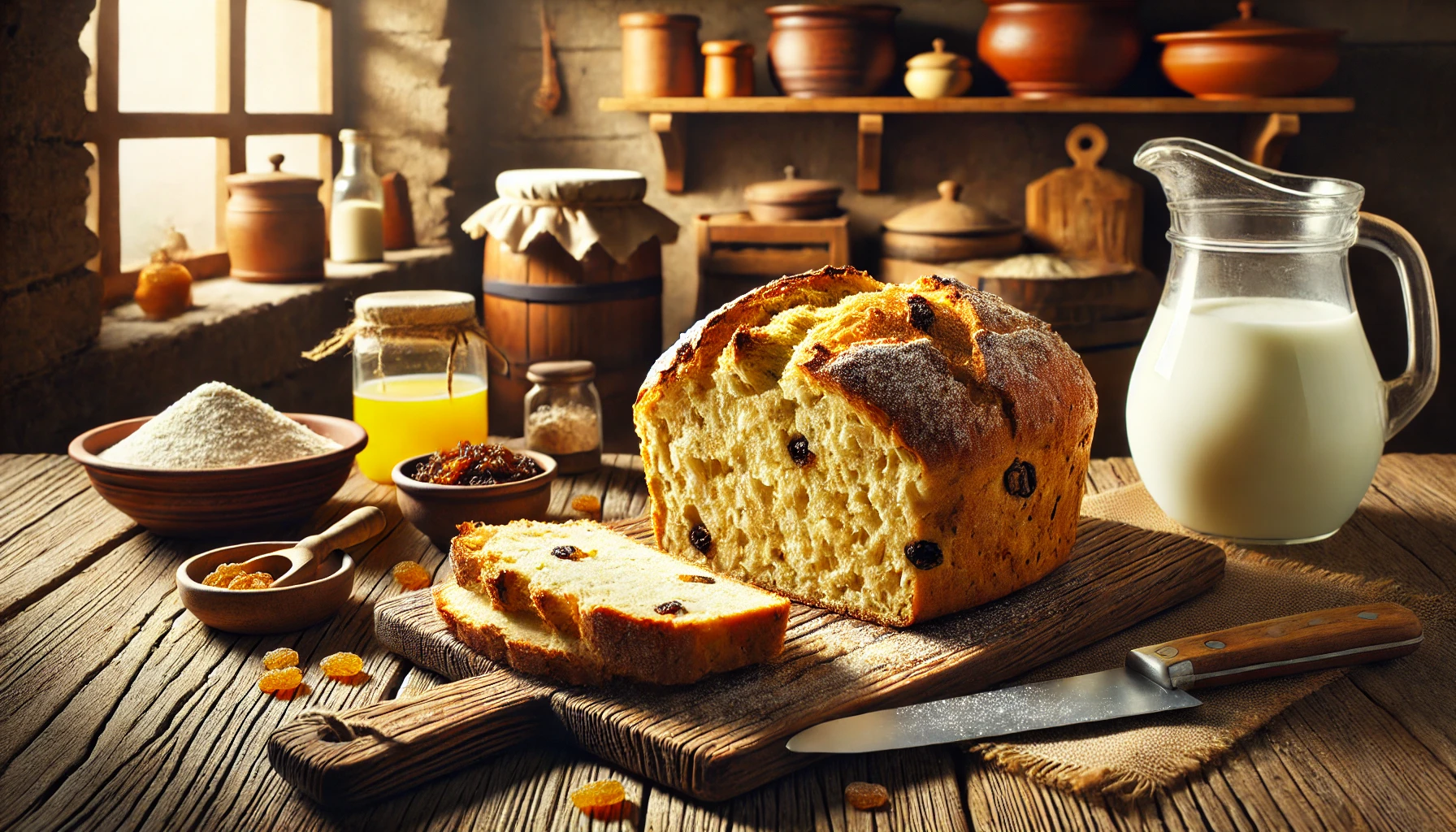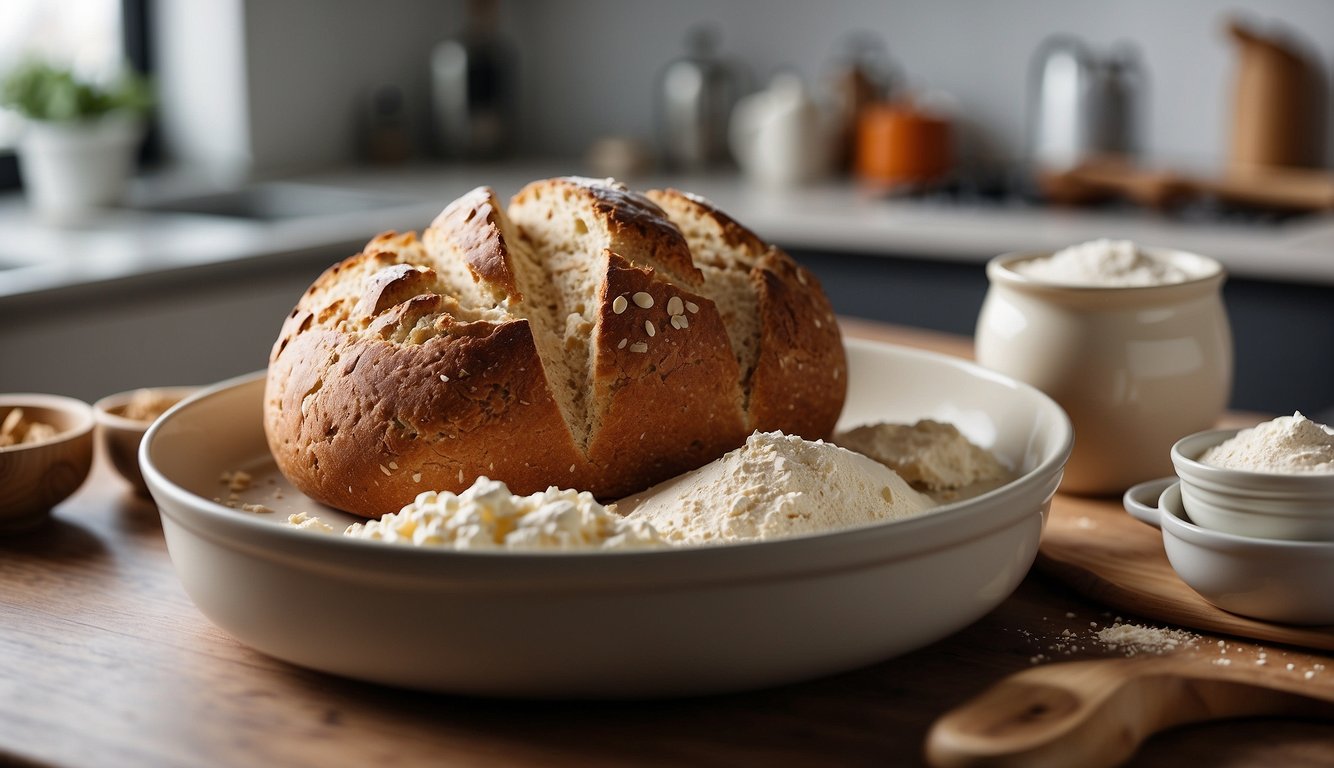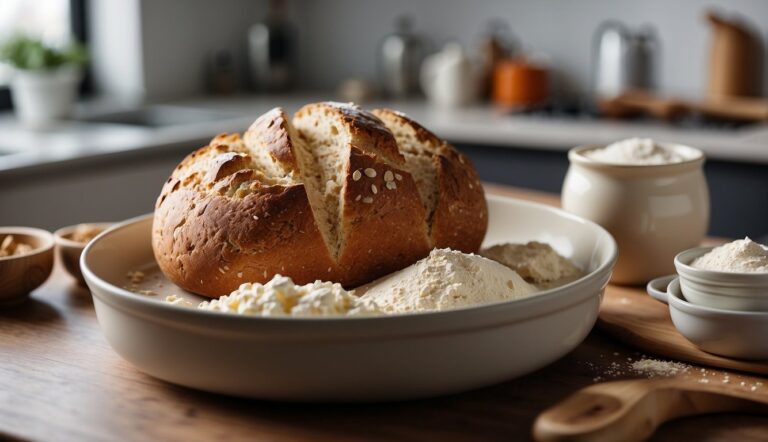Bread has been a staple food in many cultures for centuries, evolving through various forms and recipes. Among the multitude of bread varieties, yeast-free soda bread stands out for its simplicity and quick preparation time. This article will explore the intricacies of making a quick yeast-free soda bread, its nutritional benefits, and the culinary context in which it can be enjoyed. The following recipe is particularly valuable for those adhering to gluten-free, dairy-free, and egg-free diets, offering an inclusive baking option.
Ingredients
To make this soda bread, you’ll need the following ingredients:
- 50g raisins: Raisins add a natural sweetness and chewy texture to the bread.
- 250ml vegan milk: This can be almond milk, soy milk, or any other plant-based milk.
- 1 tablespoon lemon juice or apple cider vinegar: This acid helps to activate the baking soda, contributing to the bread’s rise.
- 350g gluten-free flour mix: A combination of gluten-free flours such as rice flour, tapioca starch, and potato starch works well.
- 1 teaspoon baking powder: A leavening agent that helps the bread rise.
- 1/2 teaspoon baking soda: Reacts with the acid to further aid the rising process.
- 1 teaspoon xanthan gum or psyllium husk: Acts as a binding agent, mimicking the properties of gluten.
- 1/2 teaspoon salt: Enhances the flavors of the other ingredients.
- 2 tablespoons olive oil: Adds moisture and a slight richness to the bread.
- Optional: cumin seeds: For a hint of spice and aromatic flavor.
Preparation Steps
- Preheat the Oven: Start by preheating your oven to 200°C (392°F). Ensuring the oven is hot before baking helps the bread rise properly.
- Prepare the Raisins: Soak the raisins in vegan milk and lemon juice (or apple cider vinegar) for about 10 minutes. This step allows the raisins to soften and the acid to curdle the milk slightly, creating a buttermilk-like consistency.
- Mix Dry Ingredients: In a large mixing bowl, combine the gluten-free flour mix, baking powder, baking soda, xanthan gum (or psyllium husk), and salt. Mixing these dry ingredients thoroughly ensures an even distribution of the leavening agents and binders.
- Combine Wet and Dry Ingredients: Add the soaked raisins along with the liquid mixture to the dry ingredients. Pour in the olive oil and mix until a dough forms. The dough should be slightly sticky but manageable. If it’s too dry, add a little more vegan milk; if too wet, sprinkle in a bit more flour.
- Shape the Dough: Transfer the dough to a lightly floured surface and shape it into a round loaf. You can also place it directly onto a parchment-lined baking sheet. If using cumin seeds, sprinkle them on top and gently press them into the dough.
- Bake the Bread: Place the loaf in the preheated oven and bake for 25-30 minutes. The bread is done when it has a golden-brown crust and sounds hollow when tapped on the bottom. You can also insert a toothpick into the center; if it comes out clean, the bread is ready.
- Cool and Serve: Allow the bread to cool on a wire rack before slicing. This cooling step is crucial as it helps the bread set and makes it easier to cut without crumbling.
Nutritional Benefits
This soda bread recipe is not only quick and easy to make but also caters to various dietary restrictions. It’s gluten-free, making it suitable for individuals with celiac disease or gluten intolerance. The use of vegan milk and the absence of eggs and dairy products make it an excellent choice for those following a vegan or lactose-free diet.
- Raisins: Rich in iron, potassium, and antioxidants.
- Gluten-Free Flour Mix: Typically lower in protein but suitable for those with gluten sensitivities.
- Vegan Milk: Provides calcium and vitamins without the cholesterol found in dairy milk.
- Olive Oil: A source of healthy fats and antioxidants.
Culinary Context
Soda bread is traditionally associated with Irish cuisine, where it has been a staple due to its simple preparation and the availability of basic ingredients. Unlike yeast breads, which require time to proof and rise, soda bread relies on baking soda and an acid (such as buttermilk or, in this case, a lemon juice and vegan milk mixture) for leavening. This results in a denser, more crumbly texture that is perfect for a quick bread fix.
This yeast-free soda bread pairs well with both sweet and savory accompaniments. Here are a few serving suggestions:
- For Breakfast: Spread with vegan butter and jam, or enjoy it with a side of fresh fruit.
- With Soup: Serve alongside a warm bowl of vegetable or lentil soup for a hearty meal.
- As a Snack: Toast slices and top with avocado, hummus, or a drizzle of olive oil and herbs.
Conclusion
The quick yeast-free soda bread recipe is a versatile and inclusive option for those looking to enjoy homemade bread without the wait time associated with yeast-leavened varieties. Its adaptability to various dietary needs and its ease of preparation make it a valuable addition to any kitchen. Whether you’re new to baking or an experienced baker looking for a quick recipe, this soda bread is sure to satisfy.


